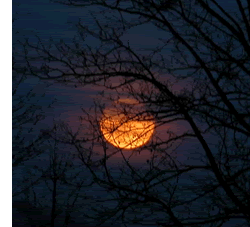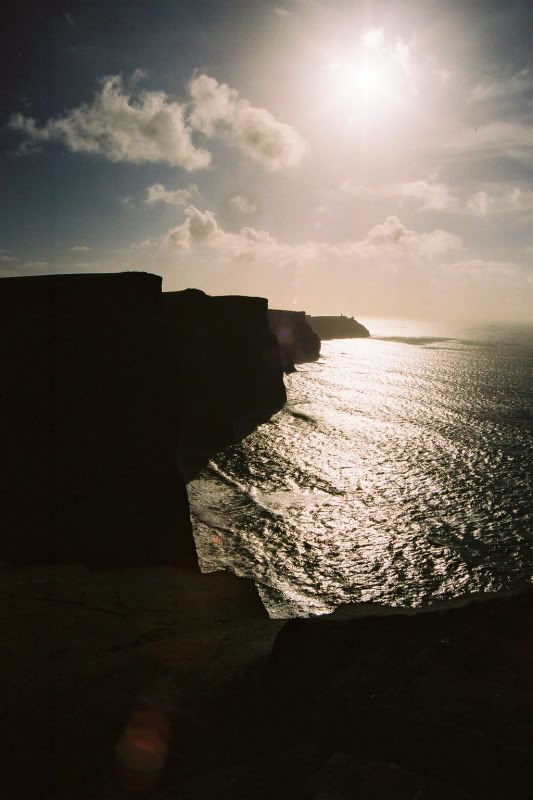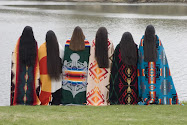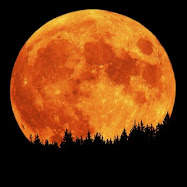
Full Moon Names and Their Meanings
Full Moon names date back to Native Americans, of what is now the northern and eastern United States. The tribes kept track of the seasons by giving distinctive names to each recurring full Moon. Their names were applied to the entire month in which each occurred. There was some variation in the Moon names, but in general, the same ones were current throughout the Algonquin tribes from New England to Lake Superior. European settlers followed that custom and created some of their own names. Since the lunar month is only 29 days long on the average, the full Moon dates shift from year to year. Here is the Farmers Almanac’s list of the full Moon names.
• Full Wolf Moon – January Amid the cold and deep snows of midwinter, the wolf packs howled hungrily outside Indian villages. Thus, the name for January’s full Moon. Sometimes it was also referred to as the Old Moon, or the Moon After Yule. Some called it the Full Snow Moon, but most tribes applied that name to the next Moon.
• Full Snow Moon – February Since the heaviest snow usually falls during this month, native tribes of the north and east most often called February’s full Moon the Full Snow Moon. Some tribes also referred to this Moon as the Full Hunger Moon, since harsh weather conditions in their areas made hunting very difficult.
• Full Worm Moon – March As the temperature begins to warm and the ground begins to thaw, earthworm casts appear, heralding the return of the robins. The more northern tribes knew this Moon as the Full Crow Moon, when the cawing of crows signaled the end of winter; or the Full Crust Moon, because the snow cover becomes crusted from thawing by day and freezing at night. The Full Sap Moon, marking the time of tapping maple trees, is another variation. To the settlers, it was also known as the Lenten Moon, and was considered to be the last full Moon of winter.
• Full Pink Moon – April This name came from the herb moss pink, or wild ground phlox, which is one of the earliest widespread flowers of the spring. Other names for this month’s celestial body include the Full Sprouting Grass Moon, the Egg Moon, and among coastal tribes the Full Fish Moon, because this was the time that the shad swam upstream to spawn.
• Full Flower Moon – May In most areas, flowers are abundant everywhere during this time. Thus, the name of this Moon. Other names include the Full Corn Planting Moon, or the Milk Moon.
• Full Strawberry Moon – June This name was universal to every Algonquin tribe. However, in Europe they called it the Rose Moon. Also because the relatively short season for harvesting strawberries comes each year during the month of June . . . so the full Moon that occurs during that month was christened for the strawberry!
• The Full Buck Moon – July July is normally the month when the new antlers of buck deer push out of their foreheads in coatings of velvety fur. It was also often called the Full Thunder Moon, for the reason that thunderstorms are most frequent during this time. Another name for this month’s Moon was the Full Hay Moon.
• Full Sturgeon Moon – August The fishing tribes are given credit for the naming of this Moon, since sturgeon, a large fish of the Great Lakes and other major bodies of water, were most readily caught during this month. A few tribes knew it as the Full Red Moon because, as the Moon rises, it appears reddish through any sultry haze. It was also called the Green Corn Moon or Grain Moon.
• Full Corn Moon – September This full moon’s name is attributed to Native Americans because it marked when corn was supposed to be harvested. Most often, the September full moon is actually the Harvest Moon.
• Full Harvest Moon – October This is the full Moon that occurs closest to the autumn equinox. In two years out of three, the Harvest Moon comes in September, but in some years it occurs in October. At the peak of harvest, farmers can work late into the night by the light of this Moon. Usually the full Moon rises an average of 50 minutes later each night, but for the few nights around the Harvest Moon, the Moon seems to rise at nearly the same time each night: just 25 to 30 minutes later across the U.S., and only 10 to 20 minutes later for much of Canada and Europe. Corn, pumpkins, squash, beans, and wild rice the chief Indian staples are now ready for gathering.
• Full Beaver Moon – November This was the time to set beaver traps before the swamps froze, to ensure a supply of warm winter furs. Another interpretation suggests that the name Full Beaver Moon comes from the fact that the beavers are now actively preparing for winter. It is sometimes also referred to as the Frosty Moon.
• The Full Cold Moon; or the Full Long Nights Moon – December During this month the winter cold fastens its grip, and nights are at their longest and darkest. It is also sometimes called the Moon before Yule. The term Long Night Moon is a doubly appropriate name because the midwinter night is indeed long, and because the Moon is above the horizon for a long time. The midwinter full Moon has a high trajectory across the sky because it is opposite a low Sun.
Gardening according to the phase of the Moon is a centuries old practice, practiced by ancient cultures the world over. It has been long known that the Moon has a strong effect on our planet and its’ inhabitants. Its gravitational pull guides the ocean tides as well as our own inner tides. Plants are no different, as with the sea and our bodies a plant’s water content is affected by the pull of the Moon. People long ago lived by the cycle of the Sun, Moon and the seasons. In today’s busy world many choose not to track the Moon phases and instead opt to purchase a farmer’s almanac. The Old Farmer’s Almanac and The Farmer’s Almanac both contain useful gardening sections that do all the planning for you. With these you have everything you need for growing a successful garden, flowerbed or orchard.
There are two methods of practice, one is by the Moon’s phase and the second is by the Moon’s phase as well as its placement in an astrological sign of the zodiac. The Moon’s month long cycle can be separated into two halves, the waxing and the waning. The first half of the monthly cycle is from just after the New Moon to the Full Moon. The Moon grows larger and brighter and it is this lighter half that stimulates growth in a plant. One common practice that has been used for centuries is to plant just after the New Moon as this gives the seed, plant or transplant two weeks of increasing, moonlight and gravitational influence to encourage germination and growth. Plants that flower and/or bear fruit above ground are best planted during the first quarter which is roughly a one week period from the day after the New Moon (or so) to the first quarter Moon. The first quarter to the Full Moon is the ideal time to plant brambly fruits such as blackberries, raspberries and the like. This first half is also the best time to water your plants. As the Full Moon nears harvest any juicy berries, succulent leafy greens or other veggies for their optimum water content. It is also best to harvest herbs at the Full Moon as their essential oils are strongest, fragrant flowers will have stronger scent too.
The waning Moon is the period from the day after the Full Moon to the New Moon, when the Moon grows smaller and the night skies are darker. This half of the Moon’s cycle discourages growth in plants. The third quarter, which is from just after the Full Moon to the last quarter, is the best time to plant trees, vines, as well as flowering bulbs and plants that bear fruit under ground (root vegetables). This phase of the Moon is beneficial to those plants which rely on strong root systems like trees, root vegetables and strawberries. The last quarter is best used to weed, till, thin seedlings and rid your garden of pests, take this last week to mulch your garden and get a handle on those weeds. By following this method you will find that once the garden is established you will be spending less time in the garden having to water and weed.
The second method of gardening involves planting and tending the garden according the zodiac sign that the Moon is passing through. For anyone unfamiliar with the astrological zodiac it consists of twelve signs/constellations in which the Moon passes through and spends a day or two in each sign during the lunar cycle, or month. The four elements each rule four zodiac signs. Cancer, Scorpio and Pisces are considered “water signs” and are the best time to plant most seeds and plants. While Cancer is the best, above ground plants put in at the time the Moon passes through any of these three signs will yield the best results. Air sign Libra is said to be best for planting flowering plants. The Earth signs of Taurus, Virgo and Capricorn are the second best choices for planting. Plant your root veggies when the Moon is in Capricorn or Taurus, Virgo is best left for weeding and tilling. Fire signs Leo, Sagittarius and Aries are also ideal for weeding, tilling, cleaning and ridding your garden of pests. Air sign Aquarius is good for harvesting and Gemini is also good for working the soil.
If all of this makes your head spin, then you can do what many people over the last two centuries have done. Pick up a copy of The Old Farmer’s Almanac and head to the Outdoor Planting Table section. Right there, at your fingertips, is a handy chart that tells you when to plant what. This method is also a great science experiment for you or your children. Plant two plants or seeds one at the ideal planting time and the second at a more “undesirable” time. Watch to see how these plants grow in comparison over the season. Will your plants wither and die if you plant them at the “wrong” time? Probably not. Your garden will still plug along, but you will lack the abundant harvest and lush growth that you could have had planting by the Moon.
Waxing
* Sow plants that flower or bear fruit above ground (1st quarter)
* Plant blackberries, raspberries and other caned plants (during 2nd quarter)
* Water Plants
* Feed Plants
* Transplant
* Nearest the Full Moon-harvest juicy fruits and greens. Herbs for optimum essential oil content, flowers for strong fragrance.
Waning
* Sow root vegetables (3rd quarter)
* Plant Trees and Saplings (3rd quarter)
* Plant strawberries (3rd quarter)
* Weed
* Mulch
* Thin seedlings
* Divide plants
* Harvest
* Pruning
* Hoe
* Pest Control










